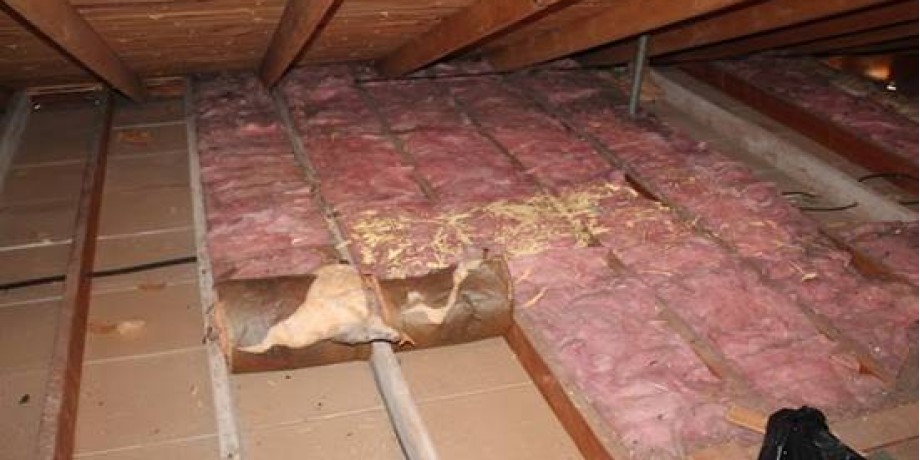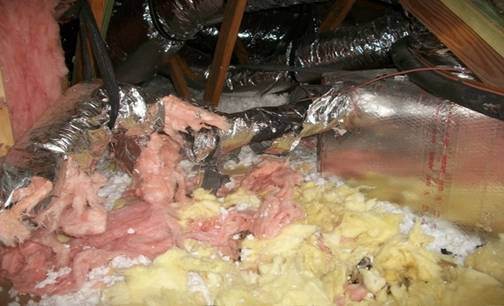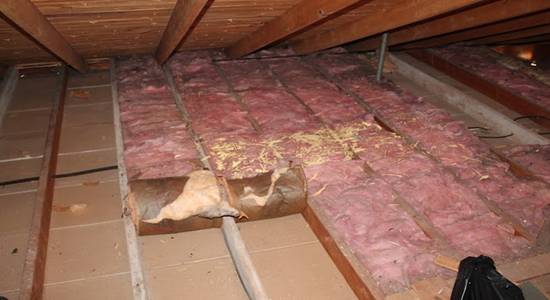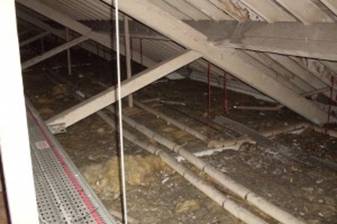Removing Ceiling and Loft Insulation

by Mark Row
Home Remodelling Project
Although people are interested in insulating their home, not only because it can be obligatory sometimes but also because they are getting increasingly aware of importance of having a well protected and sealed home, they often disregard the relevance of replacing their insulation from time to time. Namely, no matter how effective, expensive and durable insulation material may be, if not properly installed it will do practically nothing for you and your home, but on the contrary have some effects you’d rather avoid. This is why it is not enough only to know how to install insulation but also how to remove and replace it. What follows is dedicated to removing ceiling and loft insulation.
Replacing existing insulation, regardless of whether you are the one that installed it or you only bought an old house and have no knowledge on its insulation, is important for many reasons. First of all, just ask yourself why you have decided to place insulation in the first place. The answer is – to have a warm home in the winter and cool one during the summer, to isolate yourself from outside noise, to deal with moisture and condensation problems and to save on electricity bills. Well, note that all this will be jeopardized with old, damp or saturated insulation. Also, damaged insulation is a perfect place for rodents and insects and will be subject to fire and smoke. Finally, some types of insulation materials are more susceptible to water and moisture and if the material has gone wet and damp overtime, expect the moisture to easily and fast spread over the rest of your home, so it will not take much time before your notice wet stains on your walls and ceilings.

Animals In the Loft Can Damage or Destroy Insulation
The first thing you will need to do is check the existing insulation (or check whether you even have any). This will show you is and just how your insulation is damaged and does it need to be replaced. If this is not the case, that is if the material is still in good shape, you can just add some material on top on existing one, which is something you will probably have to do if you have a 20 or 30 years old house, since applicable regulations and prescribed U and R values have probably changed, meaning that the insulation you already have is just not good enough. If you need to remove the insulation material, you need to assess whether you can do it yourself or you need to hire a professional. Bear in mind that, although you probably want to save some money and do the removing yourself, certain products can be dangerous for your health and are better replaced by a professional and under full equipment. Finally, the process will depend on the insulation material.
The Removal Process
As previously mentioned, check what kind of ceiling and loft insulation you have and remove it accordingly. Most common materials used are insulation batts (like rock wool or fiberglass), board or blown-in, but in older homes you can also find hazardous asbestos insulation, but we'll come back to that later.
- Insulation batts are probably the easiest ones to remove. If they are anyhow stapled or attached to cavities or walls in your attic just use an utility knife to remove them, roll them up and place them in a plastic, garbage bag. Notice that this material can easily be compressed and larger quantities placed in one bag. If the material consists of fiberglass which, although not classified as hazardous material, can cause some skin irritations, always make sure to wear proper protective equipment, such as eye goggles, face mask and a long sleeved suit. Also, make sure to properly seal the loft hatch or door, so the particles of the material do not reach the rest of your home.

Removing Batt Insulation
- If you are dealing with blown-in fiber insulation, we would recommend that you consult and hire a professional to do it, not only because they have special equipment used in the process, but also because it is safer that way. Basically, they will use special vacuum and retention systems to extract old fiber insulation. If you want to experiment and try doing it yourself, you can use a leaf blower or a vacuum and a long hoe, switch it to reverse and suck the insulation out, making sure to empty the vacuum bag from time to time.
- Finally, older homes built in the 50s often have hazardous asbestos insulation which is now classified as hazardous and it is not uncommon for governments to prescribe the obligation of removing it from old ceilings and attics. Unlike other materials which you can remove yourself, this one should always be removed by a professional and under full equipment. Being non-combustible, it is possible that it held over years and can be spotted on chimneys, stove pipes, ceiling pipe and ducts. If you are uncertain whether you have insulation that may contain asbestos always consult a professional or you local authority.

Asbestos Insulation Deteriorates and Can Contaminate the Whole Space
Your attic and ceiling insulation removal process should not end here, since you should always add new insulation, after you have removed the existing one. Prior to doing so, always check your attic and ceiling for any weak spots or any areas damaged by the removal, clean it properly and move on to placing the material of your choice. But, that is a whole new story.
Was this article useful for you? Tell us what you think.




























































































































